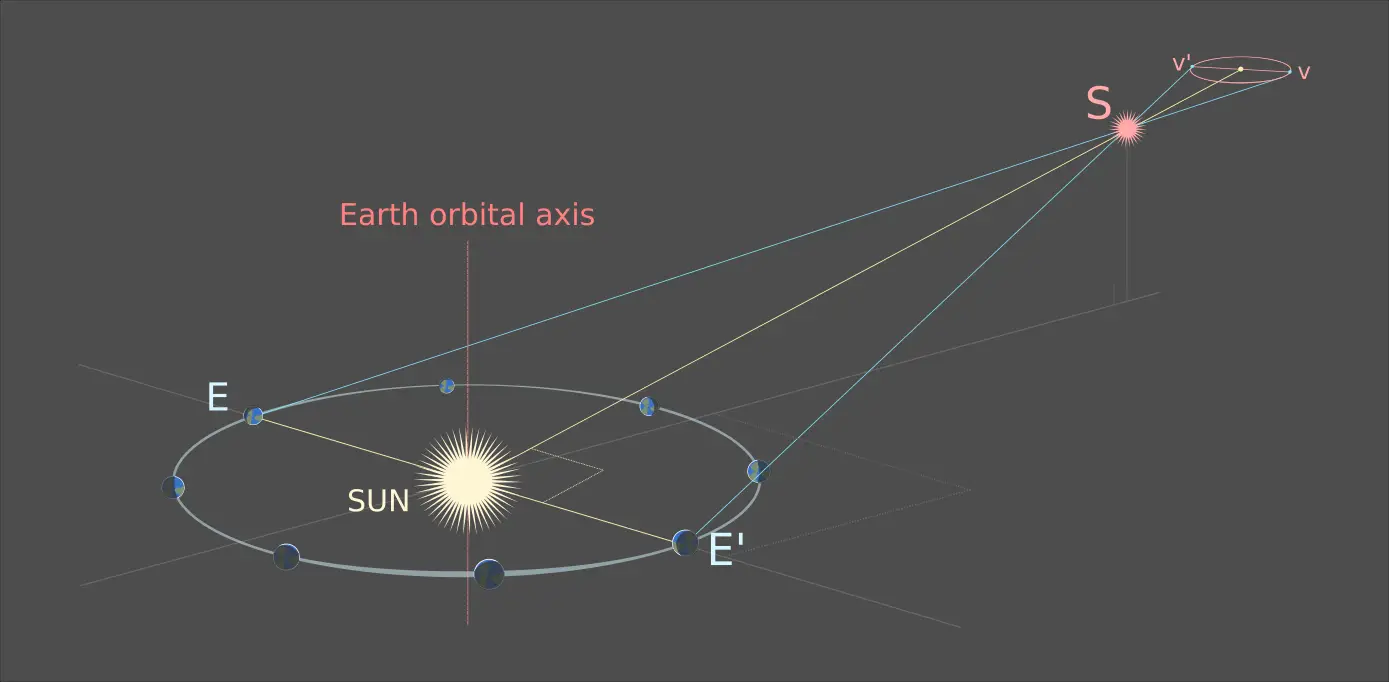Parallax astronomy is a method of measuring the distance to stars and other celestial objects. This technique can be used only for nearby stars, any farther away than that, and the angle becomes too small for this technique to work. Astronomers use parallax to measure distances up to around 100 light-years, after which they switch over to standard trigonometric parallax.
The first thought that appears in most people’s minds when they hear the word “parallax” is simply a visual cue. A parallax view is an image taken from two different perspectives, which creates a sense of depth. For example, if you take a picture of someone standing in front of something and then take a picture from the side, these two images can be superimposed to create an effect that makes it look as though the background object is further away than it is.
A parallax is a distance measurement from the Earth to nearby stars. It is used to determine distances to more distant objects, such as stars in the Milky Way galaxy. This technique can be used when the object of interest is too far away for other observation methods, such as triangulation, to be practical. A parallax is the apparent dislocation of an object due to a change in the observer’s position. It is unrelated to parallax errors in survey measurement, which can be much larger when using optical instruments.
An Astronomical Guide To The Parallax Method In Astrophysics
The parallax method is a widely used technique in astronomy to determine the distance to stars and other celestial bodies. It measures the apparent shift of an object’s position due to the change in the observer’s perspective as to Earth orbits around the Sun. The angle between two lines of sight, which converge at the position of an observed object, provides information on its distance. The Parallax method is the most commonly used technique for measuring distance in astronomy. It was first proposed by Aristarchus of Samos (310–230 BCE) to measure the distance of the Moon.
Uses Of Parallax Method
The parallax method, also known as triangulation, is a technique that can be used to measure the distance between two objects in space. It involves the measurement of how far away an object appears to be from different viewing locations and can be used for anything from tracking satellites to measuring distances across galaxies. The Parallax method is a technique used to measure the distance of stars from Earth. The attraction of this parallax is that anyone can do it with a telescope and some basic knowledge.
The images of various astronomical objects in the sky or on a screen are not real. They are constructed from many small pieces of data taken by devices called telescopes. Astronomical images are made up of pixels (picture elements). The pixels represent how much light is collected at each point in the image and, therefore, how bright that point should appear to us when we look at it. Parallax is a method that is used to measure distance. It is used in astronomy because it enables astronomers to determine the distances of stars and other celestial objects by measuring their apparent shift in position when viewed from different positions.
A real example of how parallax works
You’re walking down a busy street with your friend. When you’re side by side, your friend looks enormous (they’re far away), but when they start walking ahead of you and are in front of you, they appear much smaller (they’re close). How do we know how far away something is? Well, one way that astronomers can figure out how far away something like a star or galaxy is using its apparent shift in position over time. If you look at an object through two different eyes—such as two different telescopes—you’ll see it move against a background of other objects. This is called parallax, and it helps scientists determine how far away an object is from Earth.
![]()
